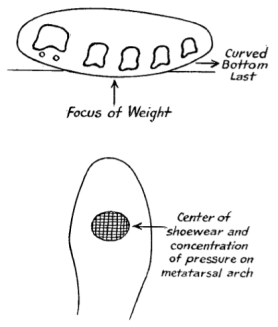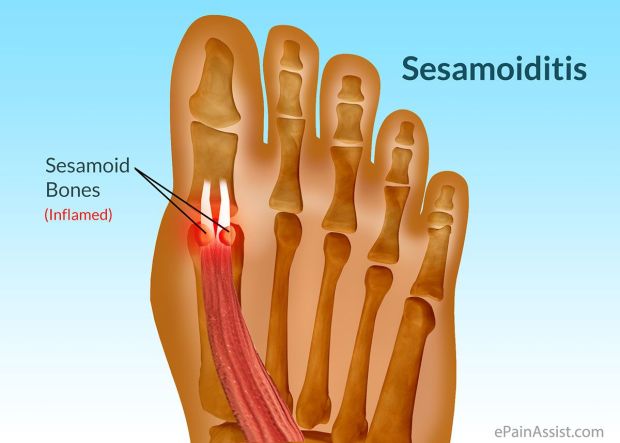Sesamoiditis—what is it?
Sesamoiditis is an inflammation of the knee cap style Sesamoid bones that float underneath the metatarsal head of the big toe. These two little knee cap bones have a nerve that passes between them and can become inflamed or the bones even fractured. This malady has been known to plague runners for years on end due to its nature and location. It is common for many types of runners, but especially on those whose feet are subject to impacting hard objects such as sharp rocks or gravel. It is also comment for those who wear shoes that are too short or too narrow.
Incident
Near the end of my Junior season of High School Cross Country, I had a seemingly insignificant experience that would alter my running career for a decade to come. While doing a trail tempo run with my great Orem High School teammates, I hit a rock just under the Met head of my big toe. I was wearing a pair of lightweight training shoes hardly suited for the trail, and the pain was significant, but I shook it off like many young, brash athletes do.
Unfortunately, this pain under the joint area of my big toe ended up plaguing me for years to come. It would ache during and after runs, and even at random times. It would especially flare up after races in narrow shoes or during and after high impact activities. It limited my collegiate running career enough that I got to a point where I had a pair of steel shank insoles put in to my shoe to limit the range of motion and to keep outside objects from impacting the area. Needless to say, I became a student of this pain and learned everything I could about managing it. I was also able to learn a lot over the next 10 years about what worked and what didn’t from the many customers who came in to the running store I worked at.
Pain Management
I eventually found that I could manage the pain a number of ways:
- By buying my shoes a size too big and opening up the laces in the toe box area like the ‘Open Toe Lacing System‘ I’ve used for 20+ years. I have since learned that this was because doing this allowed by big toe to straighten out more and rotated the sesamoids back in to a more natural position.
- By making sure to wear a shoe with good rock protection when running on any rocky trails or gravelly surfaces where an errant rock could possibly impact the area and cause major irritation. As mentioned above, I even went through a period of time wearing a steel shank insole in my shoes.
- Wearing shoes that weren’t too soft or too hard. Early on, I had doctors and others recommend that I wear the softest shoe possible. Unfortunately, this seemed to feel good the first few minutes, but actually made the pain worse over time. I later found out that when a shoe was too soft, it caused my big toe to sink in, misaligned the toes, and put extra pressure on the Sesamoids. Conversely, if I wore a shoe that was too hard, or let hard objects strike the area, the area would flare up and be very painful. Finding a shoe that provided some cushioning but wasn’t overly gushy always seemed to be the best route.
- Not wearing shoes that had heel lift or excessive toe spring (toe lift). The higher the heel on a shoe, the more unnecessary force gets placed on the forefoot area of the foot. Excessive toe spring—or upturn of the front of the shoe—also forces the toes in to the air and puts extra pressure on the Sesamoid area.
I struggled off and on with my Sesamoid pain until one day it occurred to me I hadn’t felt it for a few months. Ironically, I realized that I hadn’t felt the pain since I first tried Correct Toes and had started wearing the first pairs of Altra prototypes. The first Altra shoes—like those that have come since—were engineered to restore the foot to its natural position and to reduce injuries in every way possible. The shoes have no heel lift, the minimal amount of toe spring necessary, and a generous toe box that is shaped just like a foot in a sock so that the foot can sit in the shoe in the most natural position possible. This helps keep unnecessary strain off of the big toe, and the foot in general.
Treatment

Same foot a few minutes apart in a foot-shaped shoe vs a traditional shoe (right). On the right image, you can see the Sesamoids clearly crowded closer together and kicked over in the space in between the big and 2nd toes. Wow. This is why Correct Toes work so well for this!
After working with many customers and drawing from my own experience, following are a few suggestions that I believe will help any runner suffering with pain under the big toe:
- Get a Metarsal Pad, like BridgeSoles have. This will immediately relieve pressure on the sesamoid while also combatting the effects of toe spring (uptilt found in most shoes), which can have a big long-term effect on the sesamoids. Look for shoes that don’t tilt up as much at the front.
- A big part of the fix has to do with allowing the big toe to properly align as straight as possible, which is why a shoe with a foot-shaped toe box that doesn’t bend the big toe in makes a lot of sense. Slowly phasing in Correct Toes can work wonders and instantly put the sesamoid bones back in to their natural place. .
- Heel lift that is present in 99% of shoes also crowds the Sesamoids together and puts undue pressure on the area, which is why a Zero Drop (no heel lift) shoe should make sense for people dealing with this.
- Gradually transition whenever wearing new shoes or insoles. Giving the foot time to adjust to new angles and other differences can help prevent pain.
For a video that sheds some great light, please check out this fantastic video by Dr. Ray McClanahan and NW Foot and Ankle: http://www.youtube.com/watch?v=wLLjwAZVkrY. The Sesamoid portion comes just after the minute mark of the video. 